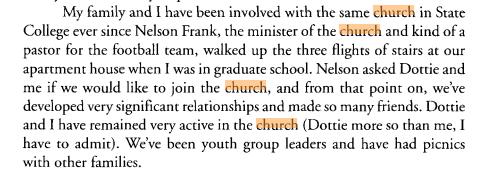Of late, I have given several talks to a variety of evangelical groups about the current research on sexual orientation. Along the way, I have been contacted by evangelicals who ask about the current status of sexual orientation research. After the conversations and speeches, many questions come up. One question I hear after almost all of these conversations is: Why haven’t we seen anything about these studies?
Many of the questioners read evangelical publications and consume evangelical media. However, they don’t know anything about the brain research of Ivanka Savic in Sweden (2005, 2006, 2008) or Adam Safron and colleagues at Northwestern University (since 2005). Their knowledge of research stops at Dean Hamer or Simon Levay (both published studies in the 1990s). They know there is no gay gene but they don’t know about the significant brain, perceptual and cognitive differences reported within the past six years by various researchers around the world.
Many evangelicals believe homosexuality is due to abuse. Some will say with confidence that gays are more likely to be abused than straights but they are unaware of the actual magnitudes of difference. However, they are unaware of the 2009 study by Wilson and Widom which found no relationship between abuse and having a gay partner for men or women (men were more likely to have had at least one gay experience in their adult lives but not a recent partner). They are unaware of the 2010 work of Wells and colleagues in New Zealand that found 81.6% of gays reported no sexual abuse in their lives. Abuse is also higher among gender non-conforming children, whether gay or straight. Given that gays are more likely to be gender non-conforming in their histories, it seems likely that greater reports of abuse among gays relate in part to gender non-conformity, and have little, if anything, to do with cause of attractions for the majority of people who are same-sex attracted.
Many evangelicals I speak to think that change of orientation is pretty common and the evidence is being suppressed by the gay-friendly media. Some of them will point to the Jones and Yarhouse study of Exodus participants. Some will even say that over half of the participants changed orientation. When I explain to them what change means in the context of the study, they are surprised. Then I point out a study, also by Mark Yarhouse, that found no change in orientation for men and women in mixed orientation marriages. They wonder why that study was not reported in the media. I wonder the same thing.
I could be wrong but I don’t think any of the studies to which I have referred here have been reported in the Christian press. The Jones and Yarhouse study was reported widely, but the Yarhouse study showing no change among sexual minorities in mixed orientation couples – which is more recent – was not reported anywhere. NARTH – a group of mostly lay people but which claims to be a scientific group – has no information on the 2008 study by Savic and Lindstrom showing clear structural differences in the brain associated with sexual orientation differences. Shouldn’t a scientific organization which claims to be interested in the science of sexual orientation report information which is relevant to sexual orientation? That omission is only one of many.
Many evangelicals get their information from NARTH through groups like Family Research Council, Focus on the Family, Exodus International, etc. Others get information from Christian media. However, these studies are not reported in these places. No wonder most evangelicals approach sexual orientation with a 1990s mindset. It is as if the evangelical world is in blackout mode when it comes to current studies on sexual orientation.
I suspect the culture war is to blame. It cannot be because sexual orientation is not news. The issue comes up in the Presidential campaigns and other news all the time. However, evangelicals are quite unprepared to discuss this very current topic with the most recent and best scholarship.
In my view, Christian media and organizations have a responsibility to provide this information to their readers and consumers. Given the backlog of unreported studies, there is plenty of material for their reporting.
